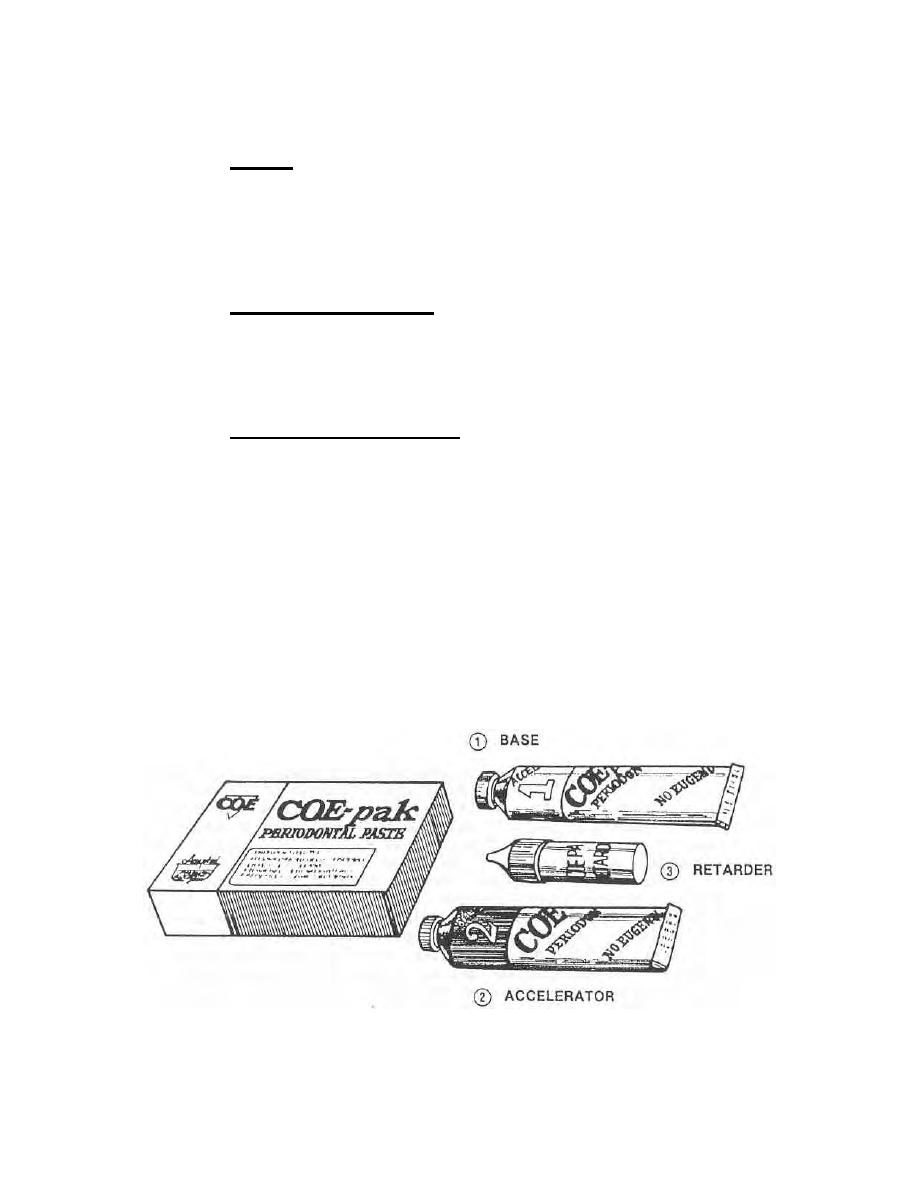
c. Gingivectomy.
(1) General. Gingivectomy, in its simple form, involves the surgical incision
and removal of the soft tissues forming periodontal pockets about the teeth. The gingival
tissue is removed to restore an environment that can be maintained in a healthy condition
by the patient and to prevent further disease in the tissues supporting the teeth. After the
soft tissue is removed, the exposed areas are thoroughly scaled and curetted while
visibility is greatest.
(2) Instruments and materials. The usual setup of instruments and materials
(previously autoclaved) for a gingivectomy includes a mirror and the items shown in figure
4-11. Other items may be requested as desired by the dental officer. A periodontal
dressing, which is used as a bandage and controller of hemorrhage, is placed over the
areas where the gingivectomy has been performed.
(3)
Duties of the dental specialist.
(a) The dental specialist should be at the chair at all times when a
patient is present, especially when surgery is in progress. He should aid the periodontist
in keeping the patient comfortable, help to maintain visibility in the operating field, have
the required instruments available, and anticipate the periodontist's need. The dental
specialist should know how much and to what consistency the periodontal protective
paste should be mixed to form the periodontal pack or dressing for the periodontal
surgery. There is a tube of base, and a tube of accelerator, and a bottle of retarder,
which have to be mixed. This is usually prepared immediately before use. After the
dressing is put in place, ice water is applied to it to help harden the material. The sooner
it hardens, the less likely it is to be displaced by movement of the patient's tongue. Figure
4-12 shows the materials used to mix a periodontal dressing, sometimes called a
periodontal pack. The most common commercial periodontal dressing is the Coe-Pak.
Figure 4-12. Materials for mixing a periodontal dressing.
MD0503
4-9


 Previous Page
Previous Page
